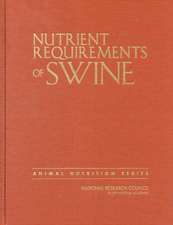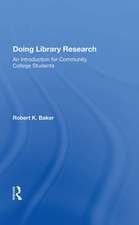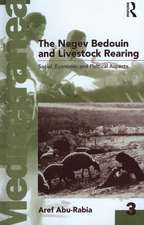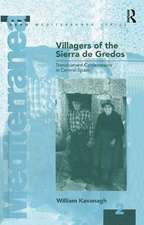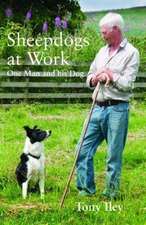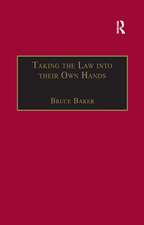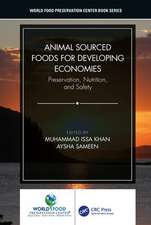Beef Cattle Science Handbook, Vol. 20
Autor Frank H. Bakeren Limba Engleză Paperback – 19 oct 2020
| Toate formatele și edițiile | Preț | Express |
|---|---|---|
| Paperback (1) | 259.98 lei 6-8 săpt. | |
| CRC Press – 19 oct 2020 | 259.98 lei 6-8 săpt. | |
| Hardback (1) | 1035.33 lei 6-8 săpt. | |
| CRC Press – 18 apr 2019 | 1035.33 lei 6-8 săpt. |
Preț: 259.98 lei
Preț vechi: 311.41 lei
-17% Nou
Puncte Express: 390
Preț estimativ în valută:
49.79€ • 51.30$ • 41.71£
49.79€ • 51.30$ • 41.71£
Carte tipărită la comandă
Livrare economică 22 februarie-08 martie
Preluare comenzi: 021 569.72.76
Specificații
ISBN-13: 9780367165192
ISBN-10: 0367165198
Pagini: 826
Dimensiuni: 152 x 229 mm
Greutate: 0.45 kg
Ediția:1
Editura: CRC Press
Colecția CRC Press
ISBN-10: 0367165198
Pagini: 826
Dimensiuni: 152 x 229 mm
Greutate: 0.45 kg
Ediția:1
Editura: CRC Press
Colecția CRC Press
Cuprins
Part 1: Global and National Issues 1. Applying Agricultural Science and Technology to World Hunger Problems 2. Future Agricultural Policy Considerations that will Influence Livestock Producers 3. Effective Ways for Livestock Producers to Influence the Policymaking Process: Practical Politics 4. The Food Animal Residue Issue: Implications for Producers 5. Facing the Facts in Getting Started as a Livestock Producer Part 2: Energy Sources and Animal Wastes 6. Photovoltaic Solar Power for Small Farm and Ranch Use 7. Anaerobic Digestion of Beef and Dairy Manure for Energy and Feed Production 8. Utilization of Cattle Manure for Fertilizer Part 3: Information Channels and Institutional Structures 9. Finding and Using Problem-solving Technology and Information in Livestock Production 10. Integrated Management: The Delivery Method for the Future 11. The University Farm: What Is Its Role in Animal Agriculture and How Do We Support It? Part 4: Range, Grass, and Forage 12. The Nature and Extent of Grazing Lands in the United States 13. What Is Good Range Management? 14. Livestock Production in Sub-Saharan Africa: Pastoralists Caught in a Fragile Environment 15. Strategies and Techniques for Production of Wildlife and Livestock on Western Rangelands 16. Using Improved Grasses Profitably 17. Our Experiences with Using Legumes Profitably 18. Controlled Grazing and Power Fence® Part 5: New Frontiers in Biology 19. Genetic Engineering and Commercial Livestock Production 20. The Potential of In Vitro Fertilization to the Livestock Industry 21. Embryo Transfer, Microsurgery, and Frozen Embryo Banks in the Cattle Industry 22. The Coming Technological Explosion in Beef Production Part 6: Genetics and Selection: General Perspective 23. The Reformation of the Bull 24. Genetics and Beef Cattle Breeding Strategies 25. Manipulation of Growth and Carcass Composition of Cattle 26. Animal Genetic Resources and World Food Production Part 7: Genetics and Selection for the Tropics and Subtropics 27. Improvement of the Productivity of the Domestic Buffalo in Southeast Asia 28. Genetic Attributes Required for Efficient Cattle Production in the Tropics 29. Heterosis: Causes and Uses in Beef Cattle Breeding in Tropical Areas 30. Genetic Improvement of Tropical Cattle 31. Selection of Cattle for Hot Climates 32. Brahmans and Their Influence on Beef Production in the United States 33. Concepts of Cattle Breeding in Subtropical and Tropical Climates Part 8: Genetics and Selection: African Perspectives 34. Cattle Breeding in Tropical Africa 35. Africander, Tswana, and Tuli Cattle of Southern Africa: Breed Characterization Separates Fact From Fiction 36. Crossbreeding Indigenous East African Cattle With American Angus and Red Poll 37. Trypanotolerant N'Dama and West African Shorthorn Cattle 38. The Changing Beef Breed Scene: Adaptability and Functional Efficiency 39. The Changing Beef Breed Scene: Growth Rate and Fertility 40. Feed Levels, Fertility, and Reproductive Problems in Cattle Part 9: Genetics and Selection: Application in the United States 41. What is Next in Beef Breeding? 42. Records in Herd Improvement and Merchandising 43. Sire Evaluation for the Beef Cattle Industry 44. Development and Utilization of a Beef Cattle Germ Plasm Composite 45. Linear Measurements and Their Value to Cattlemen 46. Beef Cattle Selection Opportunities for Net Merit 47. Comparison of the Economics and Performance of "Auction Barn" Versus Performance-Selected Angus Females in the Production of Brahman x Angus F1 Cattle Part 10: Reproduction 48. Stages of the Birth Process and Causes of Dystocia in Cattle 49. Correction of Dystocia Problems in Cattle 50. Estrous Cycle Management of Dairy Cattle Using Lutalyse® Sterile Solution (PGF2a) 51. Beef Cattle Reproduction and Management 52. Making Effective Use of Syncro–Mate–B 53. Management of Artificial Insemination Based on Twenty–one Heat Detection Signs 54. Application of Acupuncture in Treatment of Animal Infertility Part 11: Cowherd Management and Cow Efficiency 55. Marketing of Crop Residues Through a Beef Cow Herd 56. Pounds Versus Profits: Size and Milk in Beef Cows 57. Cattle Use for Profitable Resource Management in Humid Climates 58. Herd Management for Optimum Efficiency 59. Fitting Cow Size and Efficiency to Feed Supply 60. Reducing Risk in Ranching Part 12: Health and Veterinary Medicine 61. Genetic Engineering of Animal Vaccines 62. Foreign Animal Diseases of Concern to U.S. Stockmen 63. Artificial Insemination, Fertilized Ova, and Disease Transmission 64. Residual Viruses in Animal Products and By–products 65. Ethylenediamine Dihydriodide (EDDI) 66. Advances in Control of Bovine Babesiosis (Texas Fever) 67. Control of Cattle Schistosomiasis in China Part 13: Management for Growing–Finishing Cattle 68. Preconditioning: A Cattleman's Responsibility 69. Stress and Its Effects on Cattle 70. Coccidiostats for Stressed Cattle 71. Backgrounding Beef Cattle 72. Do Intact Males Fit the Profitability Needs of Commercial Beef Producers? 73. Bulls for Beef 74. Chemical Castration: A Boon to Cattlemen 75. Double Muscling: More and Better Beef Part 14: Handling Transportation and Marketing 76. Livestock Behavior and Psychology as Related to Handling and Welfare 77. Transportation of Cattle by Truck and Rail Temple Grandin 78. Management of Stocker–Feeder Cattle During the Marketing Process 79. Winter Weather, Cattle Performance, and Cattle Markets 80. Using Technical Price Analysis Methods to Aid in Hedging Decisions 81. Use of Futures Markets in Feedlot Management Part 15: Computer Technology 82. Microcomputer Usage in Agriculture 83. Computerized Records and Decision Making 84. AGNET and Other Computer Information Sources 85. Application of Microcomputers in the Management of a Beef Cow Operation 86. Facts for Cattle Feeders: Computer and Otherwise Part 16: Nutrition Feeding and Growth Promotants 87. New Methods for Calculating Ruminant Protein Needs 88. Mineral Nutrition of Beef Cattle on Acid Infertile Soils of Tropical Regions in Latin America 89. Ionophores: New Findings on Performance, Bloat, and Acidosis 90. New Implant Strategies 91. RALGRO®: An Anabolic Agent to Increase Meat Production Worldwide 92. Grain Processing: Alternatives to High Energy Methods 93. Understanding the Value of Beef Produced Part 17: Meat and Meat Cookery 94. The Contribution of Red Meat to the American Diet, Part I 95. The Contribution of Red Meat to the American Diet, Part II 96. Outdoor Meat Cookery for Small and Large Groups 97. Cooking Meat for Maximum Eating Quality 98. Meat Palatability as Affected by Nutrition of Animals Part 18: Industry Trends, Economics, and Outlook 99. Future Opportunities in the Beef Cattle Industry 100. A Farmer's Observations of Washington 101. Production Cost Comparisons Among Beef, Pork, and Chicken 102. The Changing Profitability and Efficiency of High Plains and Corn Belt Feedlots 103. Beef Exports and Imports: Current Situation and Outlook 104. Economic Outlook for the Livestock Industry
Descriere
This handbook is based on presentations made at the International Stockmen's School, January 8-13, 1984. It includes papers on beef cattle genetics and selection; general anatomy and physiology; reproduction; behavior and animal welfare; feeds and nutrition; and health, diseases, and parasites.
Notă biografică
Frank H. Baker, director of the International Stockmen's School at Winrock International, is also program officer of the National Program. An animal production and nutrition specialist, Dr. Baker has served as dean of the School of Agriculture at Oklahoma State University, president of the American Society of Animal Science, president of the Council on Agricultural Science and Technology, and executive secretary of the National Beef Improvement Federation.
Mason E. Miller is communications officer at Winrock International. A communications specialist, Dr. Miller served as communication scientist with the U.S. Department of Agriculture; taught, conducted research, and developed agricultural communications training programs at Washington State University and Michigan State University; and produced Informational and educational materials using a wide variety of media and methods for many different audiences, including livestock producers.
Mason E. Miller is communications officer at Winrock International. A communications specialist, Dr. Miller served as communication scientist with the U.S. Department of Agriculture; taught, conducted research, and developed agricultural communications training programs at Washington State University and Michigan State University; and produced Informational and educational materials using a wide variety of media and methods for many different audiences, including livestock producers.



